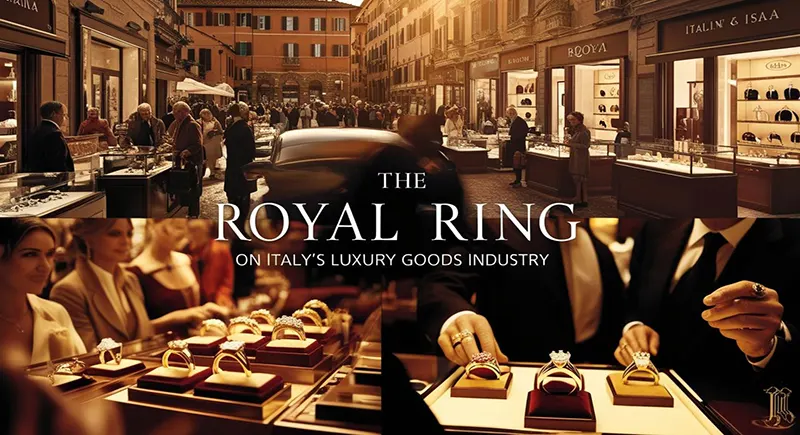Italy has long been a magnet for tourists, drawing millions each year with its rich history, cultural landmarks, stunning landscapes, and exquisite cuisine. In recent years, however, a unique and lesser-known aspect of Italy’s tourism scene has gained attention: the impact of the Royal Ring on tourism. This stunning piece of jewelry, famously associated with high-profile royal engagements, has become more than just a symbol of commitment. It has become a part of Italy’s allure, attracting travelers who wish to connect with the glamour and romance that the ring represents. An engagement ring that embodies both history and luxury, the Royal Ring has played a pivotal role in bringing attention to Italy, turning it into a destination not only for lovers of art and history but also for those interested in the royal and glamorous world of high society.
The Royal Ring, famously known for its ties to various royal families, is often admired for its dazzling design and the story behind it. Its association with weddings and engagements has made it a symbol of romance and luxury, and in recent years, its appeal has extended far beyond the royal family. As a result, many tourists, particularly couples, have sought out Italy as a destination to explore the cultural and historical significance of engagement rings and the opulent lifestyles they represent. The allure of the Royal Ring’s origins has driven people to visit locations like the Palazzo Ducale in Venice, the royal villas of Florence, and even the legendary Roman landmarks where historical figures have once celebrated love and commitment.
Tourism to Italy has always been centered around its classical heritage, with travelers flocking to cities like Rome, Florence, and Venice to experience their art, architecture, and history. However, the Royal Ring has added a layer of glamour to this historical narrative, offering tourists a new way to engage with the country’s legacy. For many, the Royal Ring represents an intersection of history, fashion, and romance, all of which are deeply embedded in Italy’s cultural fabric. Visitors are eager to discover the locations where royal engagements have taken place, as well as the luxurious jewelry that has become part of those occasions.
Italy’s rich tradition of producing fine jewelry, combined with its longstanding connection to aristocracy and nobility, makes it the perfect setting for exploring the history and impact of the Royal Ring. Jewelers in cities like Milan, Venice, and Florence offer tourists the opportunity to purchase their own version of an engagement ring, giving them a tangible connection to the country’s royal past. Tourists can also visit famous jewelry houses and museums that showcase the Royal Ring’s history and evolution. This combination of tourism and luxury shopping creates an experience that is both immersive and exclusive, allowing travelers to take home a piece of Italy’s heritage.
The Royal Ring’s impact on tourism is not only limited to couples seeking to relive the royal romance but also appeals to those interested in history, art, and fashion. Many visitors come to Italy to explore the intersection of culture and luxury, seeking out the sites and stories that made the Royal Ring a symbol of prestige and elegance. For some, it’s about seeing firsthand the opulent settings where royal engagements took place, while for others, it’s the allure of finding a unique engagement ring of their own. In either case, Italy offers the perfect backdrop for such a journey, with its picturesque landscapes and its rich legacy of creating beauty in all forms.
In conclusion, the Royal Ring has proven to be more than just a symbol of royal love and commitment; it has become an integral part of Italy’s tourism industry. The combination of history, luxury, and romance attracts millions of visitors to Italy each year, and the Royal Ring continues to draw tourists who are eager to experience the magic and splendor that it represents. As long as Italy remains the home of this iconic piece of jewelry, it will undoubtedly continue to play a major role in attracting visitors from around the world.






